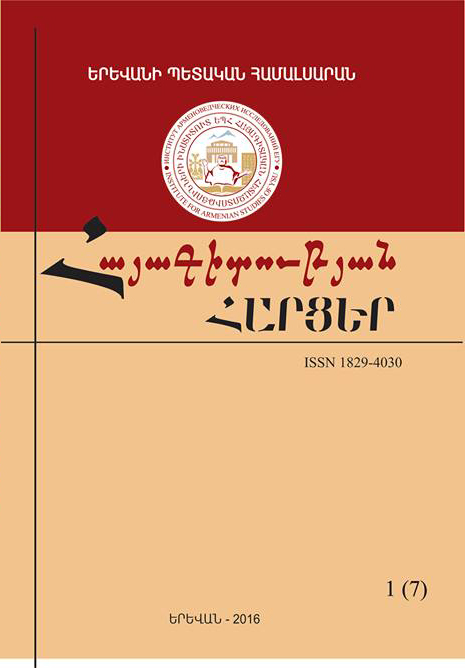Գրական հայերենի զարգացման երկու շրջափուլերը՝ գրաբար և աշխարհաբար
ԲԱՆԱՎԵՃ ԵՎ ՔՆՆԱՐԿՈՒՄ
Abstract
The question of stage division of the literary Armenian language has been in the focus of scientific interest for more than two hundred years. The view which was put into scientific circulation with the report of Gevorg Jahukyan in 1951 (according to which three stages of the history of the Armenian language are separated – Old period (V-XI), Middle period (XII-XVI) and New period (from XVII to our days), needs some explanations and specifications.
Proceeding from the new principles and approaches of literary language perception, the fact of the obvious presence of Middle Armenian-Western Armenian-Ashkharhabar generalities and more reliable interpretations of the concepts New Armenian and Modern Armenian it is proposed to introduce clarity into the accepted version of periodization of literary Armenian i.e to consider XII-XVIII centuries Early Ashkharhabar or, conditionally, subperiod of Middle Armenian and from the 1920s to our days sub-period of New or Modern Armenian with two branches – Eastern Armenian and Western Armenian.

